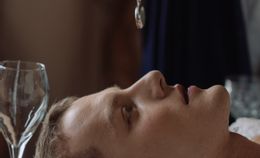Craniosacral therapy for Processing Disorders
The report of a study published in NeuroImage: Clinical , states that - as high as 16 percent of American school-age kids may face sensory processing challenges. Do you know a child who is challenged by symptoms associated with some type of processing disorder?
Did you know that there are natural and holistic treatment options that can be beneficial for managing and elevating the struggles that come with a processing disorder?
One such therapy is craniosacral therapy. In this article, we are going to explore how craniosacral therapy can be helpful, how many sessions are recommended, and what to expect to pay.
3 Types of Processing Disorders
There are three main types of processing disorders:
-
Visual
-
Auditory
-
Sensory
For full, detailed information on each of these types, read: What is a Processing Disorder?
Up next, how can craniosacral therapy help with these three disorders?
How Craniosacral May Help with Sensory Processing Disorders.
The craniosacral system houses the entire central nervous system. With CST, it is possible to correct the glitches that cause sensory processing disorders. The therapist uses the bones as handles to facilitate the easing of tension in the dural tube and the intracranial membranes. The dural tube is the membrane sac that holds the spinal cord. CST is used to ease neural connections so that both the central nervous system and motor components function optimally.
Because of the ability of craniosacral therapy to balance the autonomic nervous system, it is often used to facilitate a much more relaxed, calm (parasympathetic) state. This allows individuals suffering from sensory processing disorders (SPD) to focus and interact more successfully. The therapy unclogs blockages through the soft tissue and membranes to facilitate optimal communication between the body and brain.
Craniosacral therapy can also be used to ease tensions in the endocrine, circulatory, digestive, respiratory, musculoskeletal and neurological systems. It can help individuals with SPD make sense of their senses. Craniosacral therapy practitioners are keen to listen, observe, and establish trust with an individual experiencing sensory processing disorder.
How Feelings of Safety are Supported Through Craniosacral Therapy
For children and adults living with a processing disorder, the world can be an anxiety-producing place. When a person is living with a processing disorder,
coming in contact with unfamiliar faces, situations, and places can be frightening; thereby, triggering the central nervous system to respond with a flight or freeze response.
Because of this, feeling safe is a vital and important part of reducing and managing the symptoms associated with a processing disorder.
During a craniosacral therapy session, children and adults are allowed to stand or sit at the table in a way they feel comfortable for the practitioner to work on them.. Children are also allowed to play with any object which helps calm their nerves.
How Many Sessions are Recommended?
Findings from a study published in The Indian Journal of Occupational Therapy , the combination of craniosacral therapy (CST) and sensory-integration therapy (SIT) is effective in reducing symptoms associated with processing disorder in children with autism.
The study found that the best number of sessions for the children was:
Treatment time frame: 2 months
Frequency: 5 days a week
Length of each session: 1 hour each
However, this recommendation from the study may not be practical or the best choice for your child.
In addition, when craniosacral therapy practitioners work on children, in particular, sessions often do not go for a full hour.
Why? Because children often are not able to be still for a full hour. Just as practitioners take cues from a person's body to do craniosacral therapy work, attention is also placed on a child's body signaling it is finished receiving work in a session. Often times sessions for children can run anywhere from 20-40 minutes.
In essence, what it comes down to how many sessions are often recommended, it is important to remember that each child with a processing disorder is uniquely different. The craniosacral therapy practitioner will determine the number of sessions and the length of each session based on three things:
-
Evaluation: The initial evaluation prior to the start of treatment
-
Feedback: Feedback from the body
-
Communication: Communication from you or your child about how they are feeling and any changes that are being observed
What Will Craniosacral Therapy Cost for a Processing Disorder?
If you choose to use craniosacral therapy for managing the symptoms of a processing disorder, it is important to know that the rates per session vary from city to city throughout the country.
The average price per session in the United States is $70-$170. Many practitioners offer packages and discounts. This can help make the treatments more budget-friendly and financially reachable. So, be sure to find out if your craniosacral therapy practitioner offers any discounts, and if you qualify for them. Also, sessions rates for children are usually less than for adults.
For more information, read: How Much Does Craniosacral Therapy Cost?
References
Chang, Y. S., Owen, J. P., Desai, S. S., Hill, S. S., Arnett, A. B., Harris, J., ... Mukherjee, P. (2014). Autism and sensory processing disorders: shared white matter disruption in sensory pathways but divergent connectivity in social-emotional pathways. PloS one, 9(7), e103038. doi:10.1371/journal.pone.0103038. Retrieved April 27, 2019 from https://www.ncbi.nlm.nih.gov/pmc/articles/PMC4116166/
Miller, L. J., Nielsen, D. M., Schoen, S. A., & Brett-Green, B. A. (2009). Perspectives on sensory processing disorder: a call for translational research. Frontiers in integrative neuroscience, 3, 22. doi:10.3389/neuro.07.022.2009 https://www.spdstar.org/basic/understanding-sensory-processing-disorder
Mishra DP, Senapati A. "Effectiveness of Combined approach of Craniosacral Therapy (CST) and Sensory-Integration Therapy (SIT) on reducing features in Children with Autism" The Indian Journal of Occupational Therapy 2015 Jan-April;47(1):3-8. Retrieved April 27, 2019, from https://www.researchgate.net/publication/343650558_Effectiveness_of_Combined_approach_of_CraniosacralTherapy_CST_and_Sensory-Integration_Therapy_SIT_on_reducing_features_in_Children_with_Autism





















